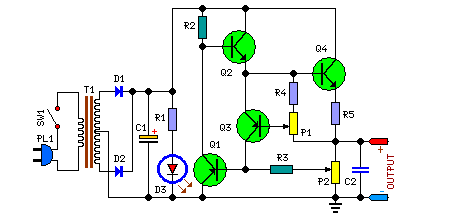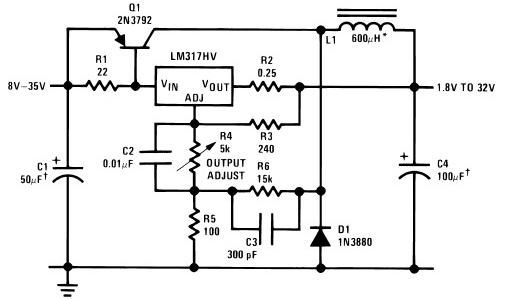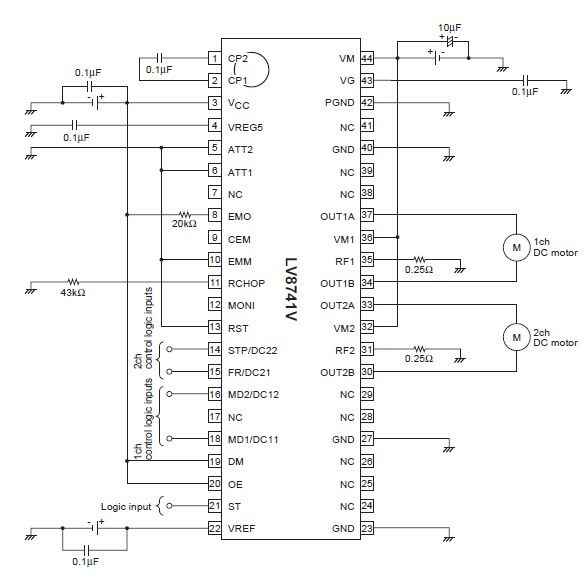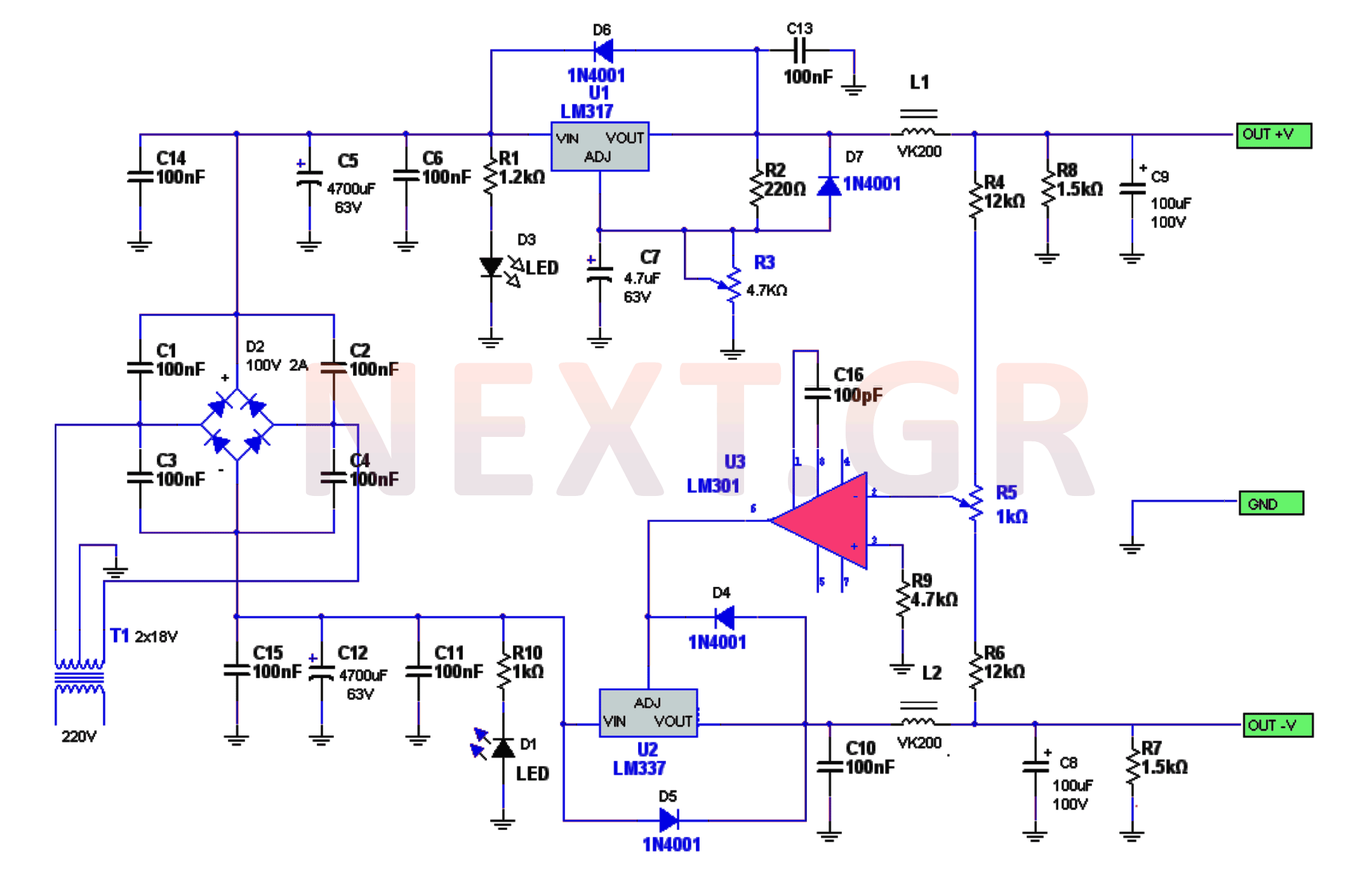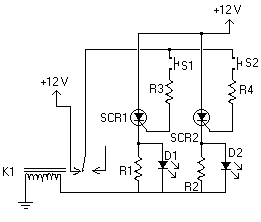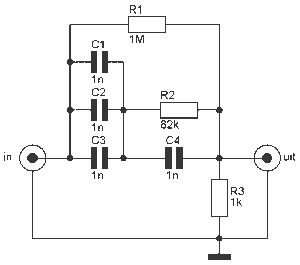
Variable PIN Attenuator
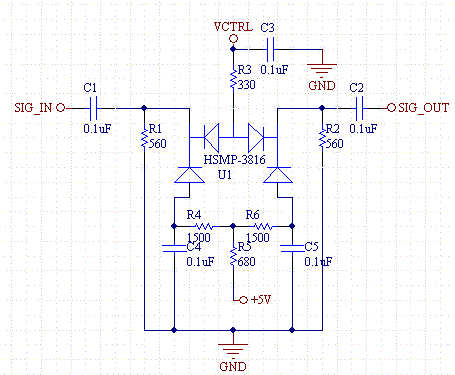
This is a highly effective RF attenuator circuit that operates within the frequency range of 300 kHz to 3 GHz, utilizing the quad PIN diode array HSMP-3816 from Avago. The lower PIN diodes are biased at 1 mA, resulting in an impedance of approximately 40 to 70 ohms. The resistor R5 can be adjusted to modify the RF input and output impedances of the circuit. The upper diodes are controlled by a voltage that varies between 0 and 10 V. When the control voltage is at 0 V, the signal is effectively blocked, while a high control voltage allows the signal to pass. This circuit's notable feature is its ability to control a higher power RF waveform using a small current.
The RF attenuator circuit described employs a quad PIN diode array, specifically the HSMP-3816, which is known for its low insertion loss and high linearity in RF applications. The configuration includes two stages of diodes: the lower diodes, which are consistently biased at 1 mA, provide a stable impedance that is crucial for maintaining signal integrity across the specified frequency range. By adjusting resistor R5, users can fine-tune the input and output impedance to match the requirements of the RF system, ensuring optimal performance and minimizing reflections.
The upper diodes are influenced by a control voltage that can be varied from 0 to 10 V. At 0 V, the diodes enter a high-resistance state, effectively blocking the RF signal. As the control voltage increases, the diodes transition to a low-resistance state, allowing the RF signal to pass through with minimal attenuation. This feature is particularly advantageous in applications requiring dynamic control of RF signals, such as in communication systems or signal processing.
The design also highlights the efficiency of using a small control current to manage a higher power RF waveform, making this circuit suitable for integration into various RF applications where space and power efficiency are paramount. Overall, this RF attenuator circuit demonstrates significant utility in modern electronic design, particularly in systems that require precise control over signal levels.This is a very useful RF attenuator circuit which works from 300KHz to the 3GHz range based on the quad PIN diode array HSMP-3816 from Avego. The lower PIN diodes are biased at 1mA which gives about a 40 to 70 ohm impedance. R5 can be increased to increase the RF input and output impedances of the circuit. The upper diodes are biased by the contro l voltage which varies between 0 and 10V. The signal is essentially blocked when the control voltage is 0V and passes when the control voltage is high. The beauty of this circuit is that a small current can control a higher power RF waveform. Do you need help with an electronics design Daycounter provides contract electronics design services.
Contact us to give you a quote on your electronics design project. 🔗 External reference
The RF attenuator circuit described employs a quad PIN diode array, specifically the HSMP-3816, which is known for its low insertion loss and high linearity in RF applications. The configuration includes two stages of diodes: the lower diodes, which are consistently biased at 1 mA, provide a stable impedance that is crucial for maintaining signal integrity across the specified frequency range. By adjusting resistor R5, users can fine-tune the input and output impedance to match the requirements of the RF system, ensuring optimal performance and minimizing reflections.
The upper diodes are influenced by a control voltage that can be varied from 0 to 10 V. At 0 V, the diodes enter a high-resistance state, effectively blocking the RF signal. As the control voltage increases, the diodes transition to a low-resistance state, allowing the RF signal to pass through with minimal attenuation. This feature is particularly advantageous in applications requiring dynamic control of RF signals, such as in communication systems or signal processing.
The design also highlights the efficiency of using a small control current to manage a higher power RF waveform, making this circuit suitable for integration into various RF applications where space and power efficiency are paramount. Overall, this RF attenuator circuit demonstrates significant utility in modern electronic design, particularly in systems that require precise control over signal levels.This is a very useful RF attenuator circuit which works from 300KHz to the 3GHz range based on the quad PIN diode array HSMP-3816 from Avego. The lower PIN diodes are biased at 1mA which gives about a 40 to 70 ohm impedance. R5 can be increased to increase the RF input and output impedances of the circuit. The upper diodes are biased by the contro l voltage which varies between 0 and 10V. The signal is essentially blocked when the control voltage is 0V and passes when the control voltage is high. The beauty of this circuit is that a small current can control a higher power RF waveform. Do you need help with an electronics design Daycounter provides contract electronics design services.
Contact us to give you a quote on your electronics design project. 🔗 External reference
